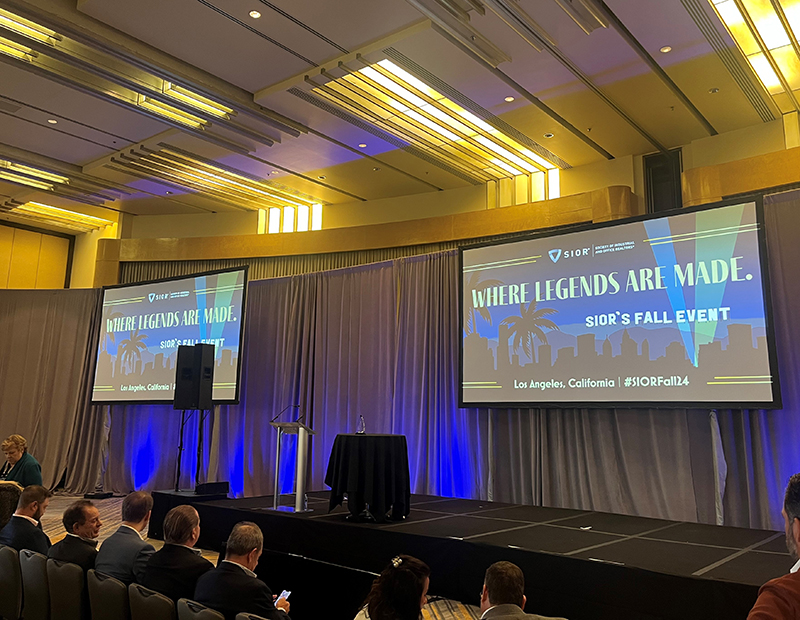Guest Column: The IRR Ate My Capital!
Daniel B. Guggenheim of Pircher, Nichols & Meeks warns that IRRs in JVs may not always turn out as intended. Here's what to watch out for.
 How IRR Hurdles in Real Estate JVs May Cannibalize Contributions Made After Promote Distributions
How IRR Hurdles in Real Estate JVs May Cannibalize Contributions Made After Promote Distributions
By Daniel B. Guggenheim
Real estate ventures commonly use one or more internal rate of return (IRR) hurdles to allocate profits between the sponsor and investors. When contributions are made after an initial IRR hurdle has been satisfied, however, typical IRR formulas may result in the investors receiving less than expected because profits on prior contributions may be treated as a repayment of subsequent contributions.
For example, consider a venture between an investor and a sponsor in which the investor contributes 100 percent of the capital and all distributions are made 100 percent to the investor until it has achieved a 10 percent annual IRR and then 50 percent to the sponsor as a promote and 50 percent to the investor. The expectation is that profits will be split evenly after the investor receives back its contributions with a 10 percent annual return, but that might not always be the case.
A typical IRR definition, as applied here, might result in the investor having achieved this IRR – and thus the sponsor being entitled to 50 percent of all distributions – at all times that the present value of all distributions to the investor equals or exceeds the present value of all contributions by the investor (in each case using an interest rate of 10 percent per annum, compounded annually). This formulation of an IRR hurdle is not likely to be controversial and might not receive a second thought from the investor or its counsel.
But consider the following circumstances and cash flows (which are admittedly extreme, for emphasis) with respect to the venture between the investor and the sponsor:
- The investor contributes $100 to the venture for a highly leveraged property acquisition.
- Revenues are used to reposition the property, and the market heats up, allowing the venture to refinance two years later and distribute $221 to the partners. This amount is distributed $121 to the investor to achieve its 10 percent annual IRR ($100 x 1.102), and the remaining $100 is shared equally by the investor and the sponsor, such that the investor receives a total of $171 and the sponsor receives $50.
- The property suffers a modest casualty one year after the refinance, and the investor contributes $30 to the venture to facilitate the restoration.
- The market cools and the venture is lucky to sell the property one year after the casualty, resulting in only $20 of net proceeds for a final distribution.
(Other scenarios that might result in similar cash flows include the acquisition and disposition of multiple assets over time and the development of a project in phases.)
How will the $20 final distribution be allocated?
The investor’s expectation is that the entire amount will be applied toward recouping its $30 contribution for the restoration, but the IRR hurdle above results in a different outcome:
- As of the time that the final distribution is to be made (four years after the acquisition, two years after the refinance and one year after the casualty), the present value of the investor’s contributions is $179.41 [($100 x 1.104) + ($30 x 1.101)] and the present value of the investor’s distributions is $206.91 [$171 x 1.102] (in each case using an interest rate of 10 percent per annum, compounded annually).
- Consequently, the investor has achieved its 10 percent annual IRR and the $20 final distribution will be shared equally by the investor and the sponsor.
Wait, what?! The investor contributed $30 of new capital one year ago, but the $20 final distribution will be shared equally?! And to make matters worse (and ignoring the time-value of money for the moment), the venture’s net profit is $111 [($221 + $20) – ($100 + $30)], but the investor’s net profit is only $51 [($171 + $10) – ($100 + $30)], while the sponsor’s net profit is $60 ($50 + $10).
How did this happen? Although IRR may be a useful tool for comparing and evaluating investments, it can lead to unexpected shortfalls when utilized to determine how profits are shared by partners in a venture. The reason is that the formula fails to distinguish between new money and old money. Therefore, excess profits on old money (for instance, $50 of the $171 that was distributed to the investor from the refinance) may be treated by the formula as having repaid new money with a return. Thus, the result above that the investor had already achieved its 10 percent annual IRR prior to recouping any of its $30 contribution from future dollars – and the notion that the IRR cannibalized the $30 contribution that was made following the distribution of the promote.
There are numerous ways to address this issue with varying degrees of effectiveness and complexity. For example:
- The IRR hurdle could be modified to ignore distributions in excess of the applicable hurdle rate (for instance, to ignore the $100 that was shared equally in the example above), so that each contribution must be recouped and the applicable return thereon must be paid, all from future distributions, before any promote is payable out of future distributions.
- A preferred return hurdle and return of capital hurdle could be used in lieu of an IRR hurdle.
- There could be a “reverse waterfall,” whereby contributions after promote distributions include a refund of the promote (for instance, the $30 contribution in the example above would have been made by the sponsor and the investor in equal shares).
- There could be other “clawbacks” obligating the sponsor to refund certain distributions (to instead be distributed to the investors) to put the parties in the position they originally envisioned.
IRRs may seem simple and typical formulations in real estate ventures work as expected in many cases — but not in every case. It is important for investors in real estate ventures, and their counsel, to understand the nuances of IRRs to avoid surprises and ensure that the joint venture agreement includes appropriate provisions to achieve the desired economics.
Daniel B. Guggenheim is a transactional partner with Pircher, Nichols & Meeks, a real estate law firm with offices in Los Angeles and Chicago. He can be reached at [email protected].
For further reading, please see Real Estate Ventures: Distribution Waterfalls and Promote Hurdles by Stevens A. Carey, expected to be published by the American Bar Association later this year, or the related articles available here.







You must be logged in to post a comment.